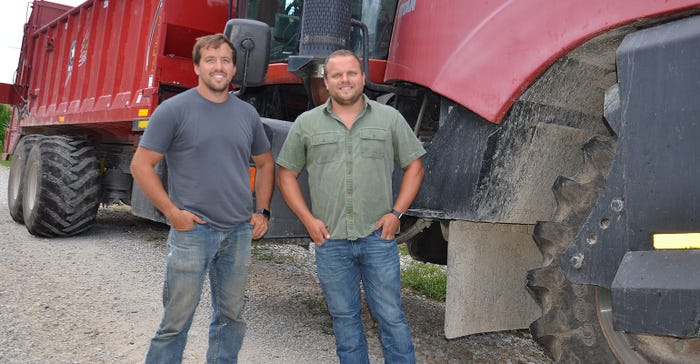
The Gettelfinger brothers of Washington County, Ind., had a dilemma. They had a used Case IH three-wheel fertilizer applicator with a dry spreader box. But what they really needed was a self-propelled manure spreader. That’s because they have lots of poultry litter to spread from their laying hen operation.
Soon they will no longer need to spread much commercial phosphorus and potassium. In fact, they don’t anticipate applying anything but nitrogen for corn in 2021.
“We decided we could convert the applicator into a manure spreader,” Kelsey Gettelfinger says. “It would have five wheels instead of three and carry a large manure spreader box.”
Not everyone should likely tackle such a conversion. However, Michael Gettelfinger worked for Jacobi Sales in Palmyra, Ind., as a mechanic before buying a farm and putting up chicken houses.
“We do most of our own mechanical work here, and this project didn’t really scare me,” Michael says.
So, once committed to converting the applicator, they removed the box and rear wheels. Then they lengthened the frame and attached four wheels to carry the box, where there had been just two wheels before. For the spreader, the brothers purchased a new manure spreader box from Meyer. It is a large-capacity box well-suited to spreading poultry litter.
“It works really well,” Michael says. “Some of our land is rolling, and you need to be aware that you only have one wheel upfront instead of two, but we’ve been able to go where we need to go.”
Apply where needed
The litter from their laying hen barns is high in calcium, Kelsey notes. They work with Nicholson Consulting, Greencastle, Ind., for soil testing and agronomic advice. When they converted to laying hens in 2019, they also hired Jim Moffitt of Moffitt LLC to prepare a complete manure and nutrient management plan for their poultry operation.
“We’re careful about where we spread litter and how much we spread,” Kelsey adds. “We follow the plan Jim developed for us and pay attention to advice from our consultant with Nicholson.”
With the rig they built, they have the capability to apply poultry litter using variable rates, if necessary, Michael says. He notes that they produce enough litter annually for about 2,500 acres. They cover their acreage and sell the rest.
Check out the slideshow to see photos of the applicator-to-spreader conversion.
About the Author(s)
You May Also Like




